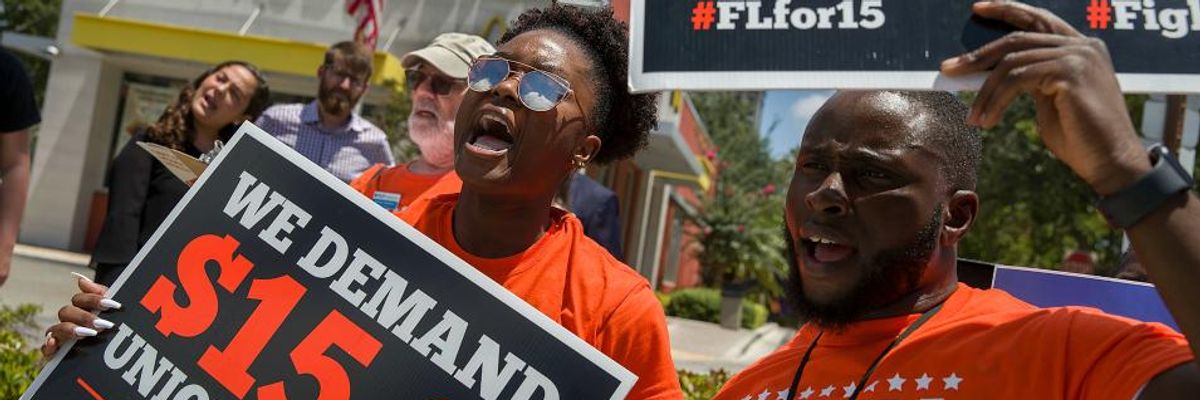On Monday afternoon, Congressional Budget Office (CBO) released a report assessing the economic impact of raising the minimum wage to $15 in 2025 in six steps (this is a similar policy to the Raise the Wage Act, which would increase the minimum wage to $15 in 2024). The key fact coming out of the report is that CBO finds that the benefits to low wage workers of a $15 minimum wage far exceed the costs. The report finds that a $15 minimum wage would increase the wages of millions of low wage workers, increase the average incomes of low and lower-middle-income families, reduce poverty, shift money from corporate profits to the wages of low-wage workers, and reduce inequality.
In particular, CBO finds that $15 in 2025 could raise the wages of 27.3 million low-wage workers, would increase the income of families who earn below three times the poverty rate by $21.9 billion, and would reduce the number of people living in poverty by 1.3 million, nearly half of them age 0-18. CBO finds that the overwhelming share of low-wage workers would benefit from a $15 minimum wage and that as a group, low-wage workers would be unambiguously better off.
While CBO's bottom line is that the benefits to low-wage workers of a $15 minimum wage would outweigh the costs, CBO nevertheless substantially overstates the costs. CBO finds that the policy would lead to a decline in employment of 1.3 million--though in choosing the parameters that resulted in that conclusion it failed to appropriately weight the highest quality studies in the vast academic literature on this issue. As a result, policymakers must be skeptical of their assessment of the employment impact, given that other careful reviews of the minimum wage literature have shown that the average study finds small-to-no employment effects of minimum wage increases.
It is not a stretch to say that a new consensus has emerged among economists that minimum wage increases have raised wages without substantial job loss (even the Cato institute acknowledges this "new conventional wisdom"). More and more, economists are recognizing that simple, dated models of the economy that always predict job loss when the minimum wage is increased are based on assumptions that have little bearing on the low-wage labor market (like the genuinely laughable assumption that in the absence of a meaningful minimum wage, low-wage employers still have no power to set wages below the full value of their workers' "worth" to the firm). Well over 100 mainstream economists signed on to this letter in support of increasing the min wage to $15 in 2024. CBO's assessment of the literature has simply not yet caught up.
Finally, CBO egregiously relegates to an appendix any discussion of what an employment decline as a result of a $15 minimum wage would really mean on the ground. The crucial fact is that an employment decline as a result of a minimum wage increase doesn't necessarily mean any worker is actually worse off. For a wide variety of reasons, a sizeable share of low-wage workers routinely cycle in an out of employment; each quarter, more than 20 percent of the lowest-wage workers leave or start job. This means that even if employment does decline as CBO predicts, workers who work less can still come out ahead because they earn much more when they are working. Consider the case of someone who now works a full-time job at $7.25 an hour for ten months a year, but can only find work for eight months when the minimum wage is increased to $15. This worker experiences a strong negative employment impact of the minimum wage increase, but actually has substantially higher annual earnings. In other words, if you take CBO's employment estimate at face value, it is important to keep in mind that the top-line number vastly overstates any adverse impact on the living standards of the low wage workers who experience the negative employment effects.
It has been more than 10 years since congress raised the minimum wage--the longest stretch in history. This is a shameful benchmark, reducing the living standards of working families in this country and exacerbating poverty and inequality. Congress should immediately pass the Raise the Wage Act and give this country's lowest wage workers a raise.
